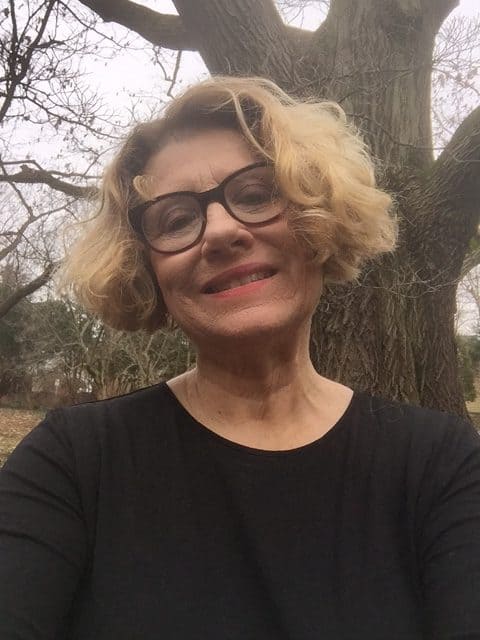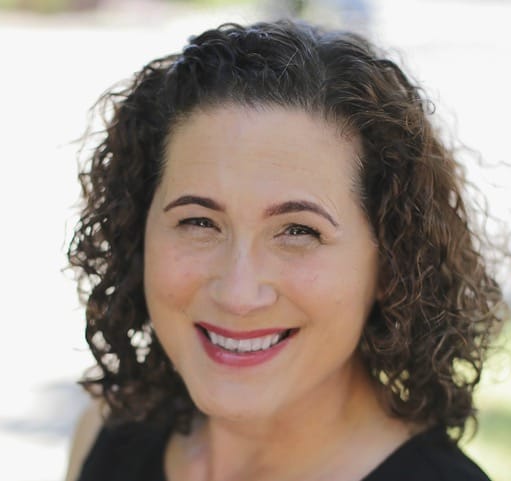
In its forthcoming March issue, Afterimage: The Journal of Media Arts and Cultural Criticism will publish a dossier entitled, “Co-creation in Documentary: Toward Multiscalar Granular Interventions Beyond Extraction” by Reece Auguiste, Helen De Michiel, Brenda Longfellow, Dorit Naaman, and Patricia R. Zimmermann. We asked Dossier contributors Helen De Michiel and Patricia R. Zimmermann to tell us more.
Why did you assemble a dossier on co-creation in documentary media practice for Afterimage?
PZ: We five have investigated the new documentary landscapes across different locations, platforms, and spaces for the last five years at the Visible Evidence Conferences on documentary. We have done traditional panels and interactive workshops to open discussion about these emerging co-creation documentaries.
HDM: We want to liberate documentary. Each of us has had adventures and transformational experiences working within a co-creative approach, from making participatory documentary projects to writing and teaching about them. We want to turn the old rules of “how-to’s” into strategic “how-about’s?”
What exactly is co-creation?
HDM: Co-creation offers a conceptual map for deeper collaborative feeling and thinking together over time. With this approach, I let go of preconceived ideas. I might ask, “What are we noticing together?” This strategy offers a project a framework for ongoing transformative dialogue.

PZ: Co-creation moves from one director to many collaborators. It flips production processes from vertical hierarchies to myriad kinds of horizontal cooperation. It reimagines audiences as participants who generate ideas, images, stories.
How does co-creation deal with the issue of documentary ethics?
PZ: Ethics surges underneath all documentary practices. Who can make an image of whom? What meaning do these images have? How does that image circulate and how is it to be used? How do we do no harm to subjects? Can subjects become collaborators?
HDM: I can’t separate myself from ethical dilemmas. How can we pay more attention to relationships of hope, passion, and power hidden behind the screen? What are the individual and political dynamics that affect and interrupt the project outcome? How can we renegotiate control, meaning, and outcome? Co-creation threads these questions into its process.
Why is co-creation significant in the documentary media landscape?
HDM: Inquiry resides at the heart of the co-creative process. Why are certain forms of documentary sanctioned and not others? The co-creative approach requires courage to listen, and then to see where challenging conversations might lead. Communities, filmmakers, and partners can develop projects alive to their particular needs and desires, and bypass commercial corporate gatekeepers.
PZ: Although sidelined for auteurist work, co-creation forms a key sector of international documentary history. The histories of radical political media collectives infuse co-creation, such as with the Workers Film and Photo League (1930s), Newsreel (1970s), and the decades-long histories of community-based media.
Who contributed to the dossier?

PZ: We are historians, makers, producers, programmers, theorists. Reece Auguiste, filmmaker and scholar, was a founding member of the Black Audio Film Collective in the UK. Helen De Michiel has a decades-long career in documentary across analog and digital features, installations, and shorts. She used participatory practices in her episodic 2015 documentary, Lunch Love Community.
HDM: Patricia Zimmermann is a historian, theorist, and programmer specializing in documentary. Dorit Naaman is a scholar and a new media practitioner who produced the web project Jerusalem We Are Here (2016).Brenda Longfellow is a scholar and practitioner with a history in co-creation in her new media project Offshore (2013), and her current project on restorative justice.
Why does the dossier look at new media forms beyond festival/broadcast/theatrical documentary?
HDM: Creators all over the world model new media projects outside of traditional institutions, with non-traditional tools and in non-traditional spaces. This work and the questions it poses inspires our dossier’s “Fifty Speculations and Fifteen Unresolved Questions.”
PZ: Feature-length, highly resourced broadcast, festival, or theatrical works dominate the documentary golden age, adopting industrial genre conventions such as comedy, film noir, thriller. Documentary is a more expansive ecology of different approaches, forms, resources, and structures. Polyphonic new media opens up exciting intellectual and political questions.
HDM: Co-creation is wide-open fluid territory.
Why work as a team to write this dossier?
PZ: Co-creative documentary is global and vast. It mobilizes different engagement strategies that facilitate varying intensities of participation.
HDM: We start by asking “how about this?” We think alone when writing. Yet we imagine together in public what is possible. We honor our diverse histories and different documentary approaches. Awareness of these in-between spaces and connections sparks collaborative energy and drive.
PZ: It is polyphonic: a team with different backgrounds and approaches across history, practice, and theory can crack open more complexity.
How is co-creation different in terms of production, distribution, and exhibition?
HDM: For me, documentary is a permeable open artifact and not just a container for stories and messages. Co-creation invites change,fluidity, and growth. A complicated project might reach a coherent conclusion, or it may remain unfinished and fragmentary.
PZ: Co-creation media practices reconfigure and rewire production, distribution, and exhibition—dissolving distinctions. They are place-based and community driven. They circulate among communities or political groups outside of major festivals. Collaboration rather than narcissism drives it, but so do unresolved political issues such as climate disruption or gentrification.
HDM: This way of working interrogates and refocuses production, distribution, and exhibition practicalities.
Why isn’t co-creation taught in film and media schools?
PZ: For nearly four decades, I have taught in a large communications school. Programs default to American-white-male-centric-industrial models: auteurist, predictable, Western, vertically structured production values.
HDM: Branded individualism is alluring. To teach co-creative approaches means to question basic myths of cinema that a powerful singular imagination guides a finished work.
PZ: Neoliberal individualism infiltrates. Collaborative, community-based, participatory work is demonized. It does not secure students jobs. It’s too political.
HDM: Exposing students to design thinking, dialogue facilitation, and participatory community processes frees them to consider documentary as a starting point, rather than an end point.
What are your hopes for the dossier?
HDM: Our own co-creative experiences have made a strong impact on us. We hope to inspire others to consider, work with, and amplify these approaches.
PZ: Because the five essays and fifty speculations are short and accessible, we hope they will circulate widely. We’d like to see this dossier galvanize ongoing discussions about co-creation as a new possibility for new media documentary.
HDM: It’s time to develop a new body of co-creative ideas and strategies that make sense for everyone interested in exploring new directions for documentary in the twenty-first century.
Contributors Helen De Michiel and Patricia R. Zimmermann also co-authored (with Reece Auguiste and Aggie Ebrahimi Bazaz) the dossier “Speculations and Inquiries on New Participatory Documentary Environments,” which was published in Afterimage in 2017. They co-authored Open Space New Media Documentary: A Toolkit for Theory and Practice (Routledge, 2018)
Afterimage is currently accepting original research articles for peer review and possible publication. Please see the journal’s Call for Papers for information on how to submit.